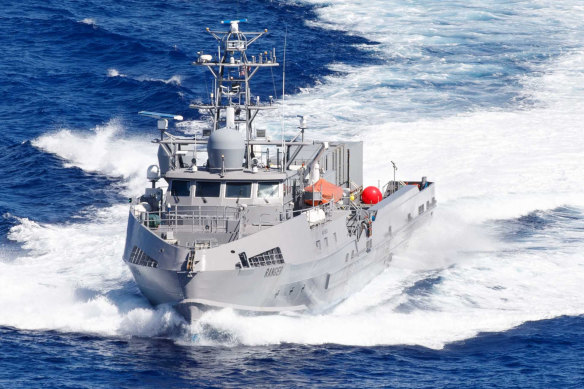Opinion
Forget driverless cars, crewless ships are on the way
Brian Johnston
Travel writerYou might well snort in disbelief or horror, but a time when cruise ships sail without any navigational officers on board might arrive by mid-century. Perhaps a ceremonial captain might be present to keep passengers reassured and preside over the much-coveted Captain’s Table in the restaurant.
Maybe I’m indulging in whimsical speculation – okay, I am – but it doesn’t take a crystal ball to see what’s coming. After all, driverless trains and trams are a reality, and planes fly largely on autopilot. Planes could fly without pilots at all if it weren’t for the unease of passengers at the idea.
The shipping industry has been working on unmanned surface vehicles or USVs for some time. USVs use radar, infrared sensors, cameras, GPS and remote-sensing devices above and below the water to provide better “vision” than human crew, especially in darkness or poor weather conditions.

The US Navy operates several unmanned vessels.Credit: US Navy
In 2018, a collaboration between Rolls-Royce and Finferries successfully trialled a crewless ferry in Finland. Despite poor winter weather conditions, it made one journey autonomously and, on the return, was remote-controlled by staff in an operations centre on land.
Helsinki is now trialling the world’s first commercial autonomous electric boats which will operate between the city and its islands as a small public ferry.
Norway is also racing towards USVs. In 2022, a crewless cargo ship sailed between Horten and Oslo. There have been further trials since, and its auto-docking technology is now used on some ferries in Oslofjord.
Russia, China, the United States, France and Japan are also developing USV technology. All have successfully trialled crewless ships. In 2022, two Japanese USV container ships notably made long journeys through Japan’s busy shipping lanes without mishap.
Some forecasters think commercial USVs will be common by 2030. Japan is aiming to make half its local commercial fleet automated by 2040.
The only type of USV currently sailing commercially carries crew but, like a plane, operates for most of the time on autopilot. On trial, and coming soon, are those that have no crew but are remote-controlled by humans. Military versions are already a reality.
The ultimate aim is full automation, with the ships’ AI operating systems making all the decisions. Technology is no longer the real challenge, but rather regulatory approval and the issue of cyberattacks, which could see vessels lose control, or be taken over by hostile powers.
For the moment, the focus is mainly on oil tankers and container ships on which automation would lead to lower labour and logistics costs, more room for cargo, and increased safety. Human error is the cause of three-quarters of maritime accidents.
Where commercial shipping sees benefits, I reckon cruise companies are sure to follow. USVs with passengers and hotel staff on board will require more rigorous regulation, of course, but a sea change is surely coming: it’s just a matter of when.
EVERYONE ASKS: Should I river cruise upstream or downstream?
The direction of travel does subtly influence your cruise experience. Sail downstream and you go with the flow, so your ship’s speed will be somewhat greater. As a result, you get to your next port of call more quickly, which means you’ll have more time off the ship.
Ships travel more slowly in the upward direction: considerably so on big rivers with strong currents, such as the Yangtze in China or Columbia in America. The difference isn’t as significant in Europe, where rivers currents are controlled by locks, and distances between ports are generally short.
One result is that engines labour more, so you may be disturbed by more noise or vibration, especially in lower-deck cabins towards the ship’s rear. Another is that you may have to sail parts of the river after dark.
On the most scenic rivers, however, you may actually want to travel slowly. On Germany’s Rhine Gorges, for example, you get longer to admire the passing scenery – steep vineyards, ruined castles, passing medieval villages – when travelling upstream.
And on the Yangtze River, you get considerably longer in the highly scenic Three Gorges sections, since ships heading inland travel up to half the speed of those heading seawards.
Sign up for the Traveller newsletter
The latest travel news, tips and inspiration delivered to your inbox. Sign up now.